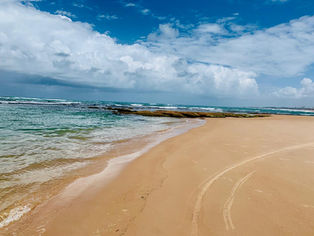




To find out all that Guarajuba has to offer, visit www.euamoguarajuba.com.br and enjoy this paradise on the coast of Camaçari.
Walking through Guarajuba is contemplating a perfect fusion between nature and development, public and private, historic and contemporary. Its name originates from the Tupi-Guarani, “golden heron”, in allusion to the brown color of the birds very present in the place, which with the solar reflection, their feathers gain a beautiful golden glowing color. From indigenous heritage to gastronomic and cultural appeals, the region of Guarajuba is a complete destination for those who want leisure, fun, sport or tranquility.
And this piece of paradise was already well frequented since the time of the Discovery. While the first nucleus of inhabitants that gave rise to the current municipality of Camaçari covered lands occupied by indigenous people and villages by the Jesuits, in 1562, the lands of Guarajuba were still territory. of the Guarani and were part of the largest large estates known in the world, encompassing 800 thousand square kilometers of land - from Salvador to Maranhão, with the headquarters of the Casa da Torre de Garcia D'Ávila, who arrived in Bahia in 1549, with the first governor general, Thomé de Souza, in the position of bailiff of the royal crown, with the mission of founding the city of Salvador.
With the abolition of slavery and this huge estate being dismembered, the first interventions for the occupation of Guarajuba began with a coconut farm and the formation of a fishing village, a fact that can be confirmed by the people who visit the place, as the descendants of these men who earned their income from the sea are still seen on the shores of Praia do Porto de Guarajuba, at the Fishermen's Association.
The first houses arrived in the land of the golden herons at the end of the 70s, when the land was subdivided. Still without infrastructure, being just a destination for rest and summer, Guarajuba gave the first signs of economic and tourist growth in 1982, with the creation of the first condominium (Condomínio Paraíso), thus establishing the condominium culture in the region. With the emergence of new condominiums, in 1987 the ASCON (Association of Condominiums and Residents of Guarajuba) was structured, responsible for the organization until the present day, making Guarajuba a prominent neighborhood throughout Brazil.






